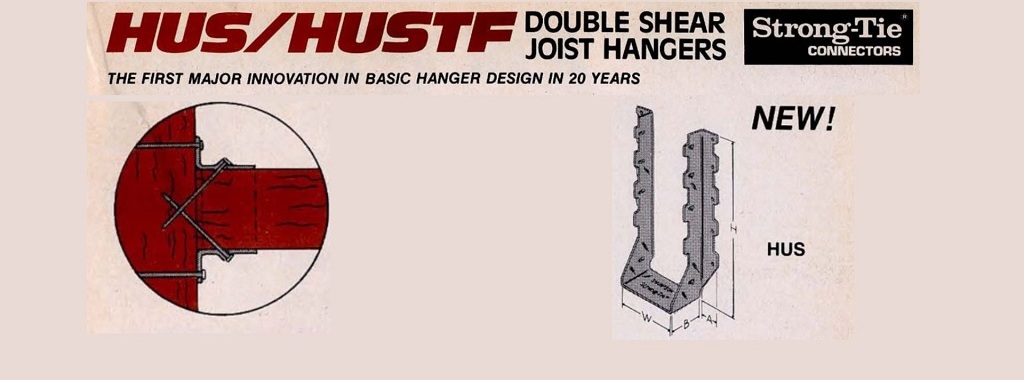The first double shear hanger was the HUS, which appeared on the cover of the 1984 connector catalog. (Sorry that the image is a little dark. Thankfully, our photography and art design have improved over the last several decades.)
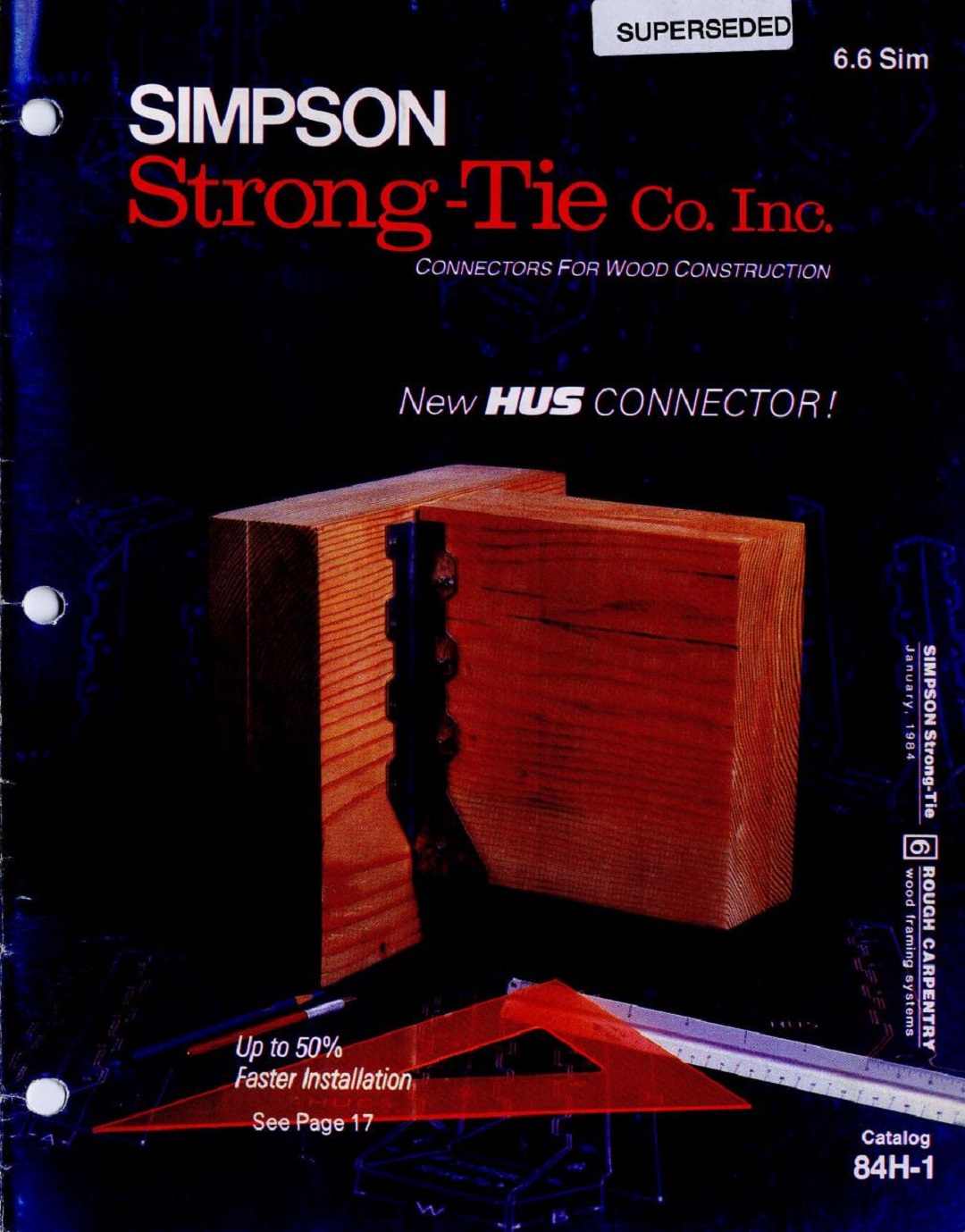
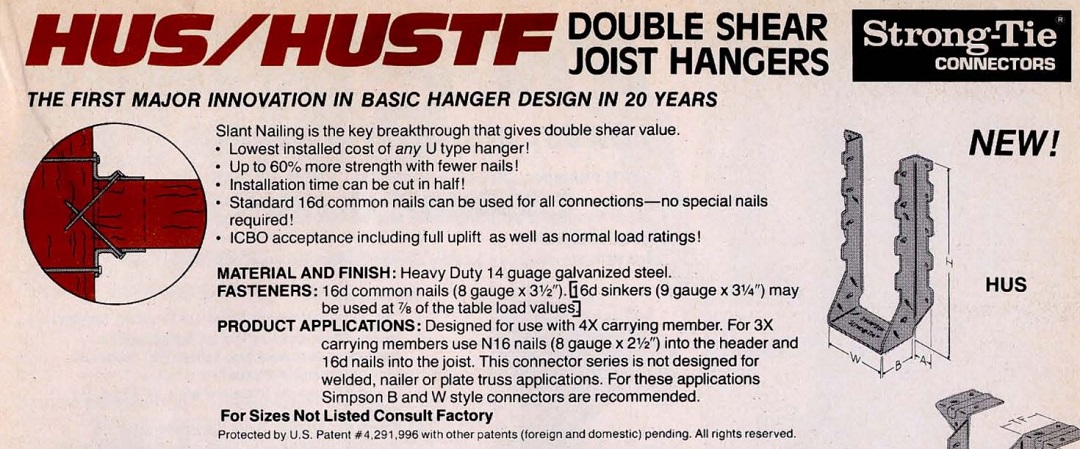
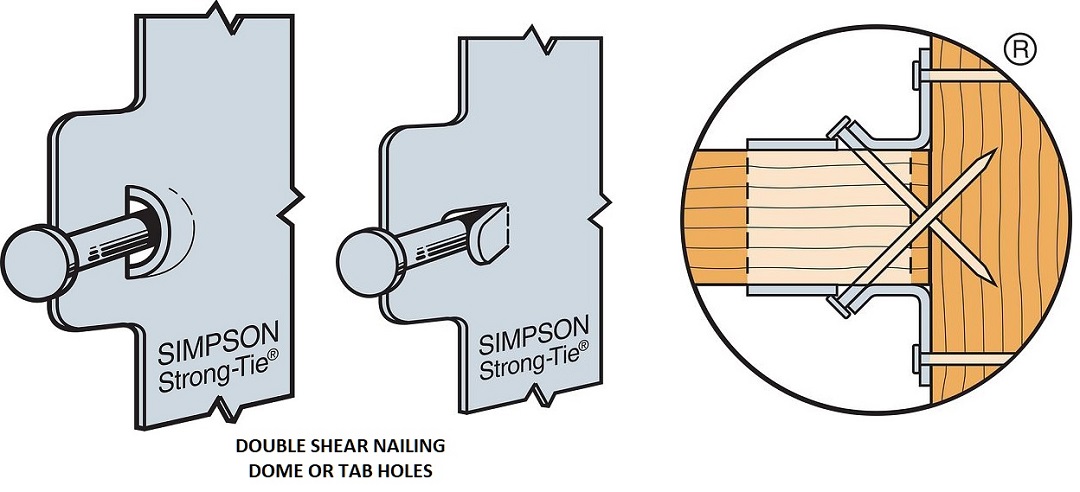
Face-mount joist hangers have joist fasteners to secure the joist to the hanger for uplift and face fasteners to transfer download into the header. In traditional “straight nailed” hangers, the joist fasteners do not increase the download capacity of the hanger, since they do not touch the header. The innovation of double-shear nailing is that dome or tab holes guide the joist nails to a 45-degree angle, penetrating both the joist and the header. Not only does this increase the allowable download, it also increases the uplift capacity.
The lighter LUS double-shear hangers were introduced just one year later, offering an economical solution for lighter loads. To achieve even higher loads for truss applications, the double-shear hanger line expanded more over the years. In 1988, we introduced the HUS210 for heavily loaded 2x members, such as plated trusses. Subsequent plated truss additions were HHUS26 and HHUS28, and then the HGUS series of hangers was first released in 1991. While the HUS and HHUS were 16 or 14 gauge depending on model, the HGUS used 12-gauge steel and had significantly more fasteners to achieve higher loads for plated truss applications.
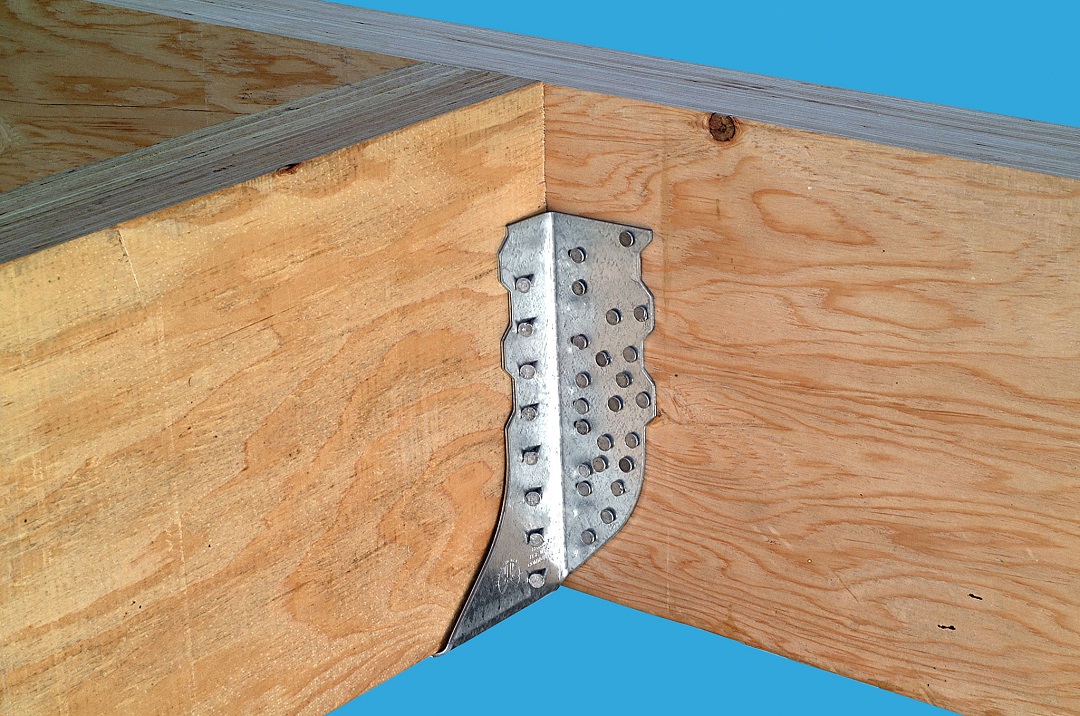
In case you’re curious about these names, a brief word on our nomenclature:
U = U-shaped hanger S = Slant nailing (aka, double shear)
L = Light H = Heavy
HH = Hecka (??) heavy HG = Heavy girder



